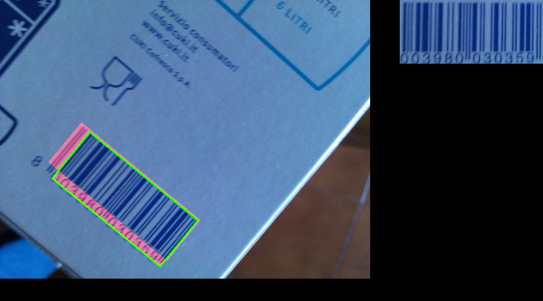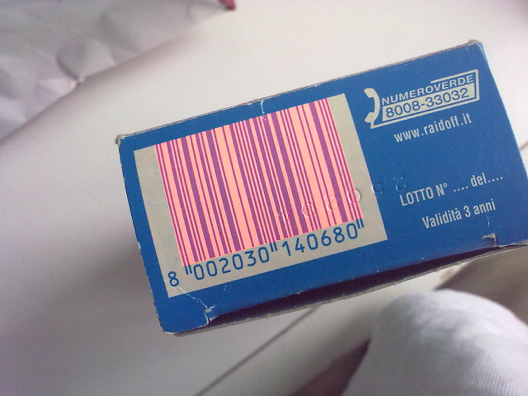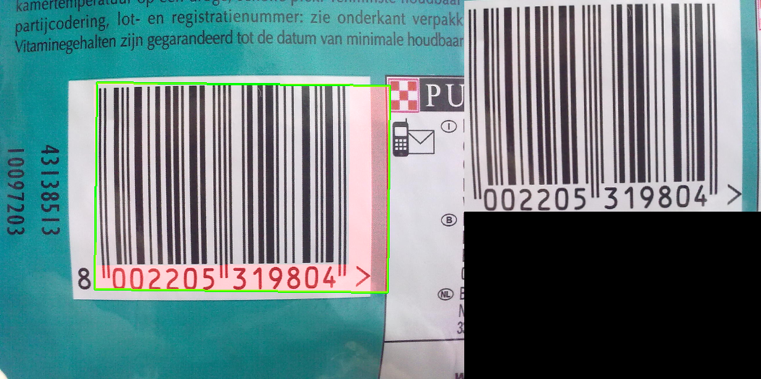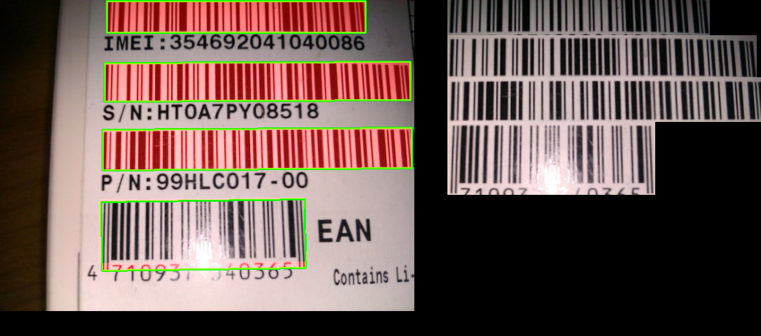Object detection for rotated 1D barcodes
This is a python implementation of the barcode detection algorithm described in creusot2015.
The method aims to find the regions in an image where a 1D barcode is present (rotated bounding box). A Maximal Stable Extremal Region (MSER) method is used to detect the bars which are subsequently clustered into barcodes. For the actual decoding of the barcode the pyzbar library is used.
The project is set up to run against the ArTe-Lab Rotated Barcode Database, one of the datasets described in the Creusot paper, so that the results of the paper can be verified.
Performance
The algorithm achieves a mean accuracy (mean IOU) of 0.76 and a mean detection rate (mAP @ 0.5 IOU) of 0.89 on the ArTe-Lab dataset at around 8fps on a 2013 MacBook Pro (CPU).
Issues
The algorithm works well for for many barcodes and runs at a speed that make it suitable for real-time barcode detection on mobile devices, however it does not perform well for blurry images.
-
The algorithm fails to detect the blurry bars on edge of barcode or fails to detect blurry barcodes completely:
 (green: detected region, red: difference to ground truth, right hand side: the extracted image used for decoding)
(green: detected region, red: difference to ground truth, right hand side: the extracted image used for decoding) -
As described in Creusot2015, the algorithm fails to detect "non-compliant" barcodes that lack a white margin around margin around the bars. In this case MSER interprets the blue pixels as one area and fails to disconnect the bars from the surrounding area:

-
The bars of the area surrounding the barcode are sometimes interpreted as part of the barcode by the clustering algorithm. Creusot2015 describes a post-processing step to resolve this issue, however, since the barcode can be decoded even with the extra area, this is mostly a cosmetic issue and the post-processing step is omitted in this implementation.

-
In some images of the ArTe-Lab dataset only the primary barcode is labeled, this leads to some artificial "error" from the secondary barcodes.

Alternatives
The algorithm runs at a speed that make it suitable for real-time barcode detection on mobile devices and works well for most barcodes, but as described above, it performs poorly for blurry images.
A modern object detection algorithm such as Mask RCNN achieves far superior results for blurry images, however this comes at far higher computational costs.
See this fork for Mask RCNN that has been trained on 90% of the images of the ArTe-Lab dataset and run against the remaining 10% for testing. The algorithm achieves a mean accuracy (mean IOU of 0.9) and a perfect detection rate (mAP @ 0.5). However, this is only suitable for real-time detection on a dedicated GPU, my 2013 MacBook Pro can only run 0.14fps with a Resnet50 backbone and with the same 640x480px images.